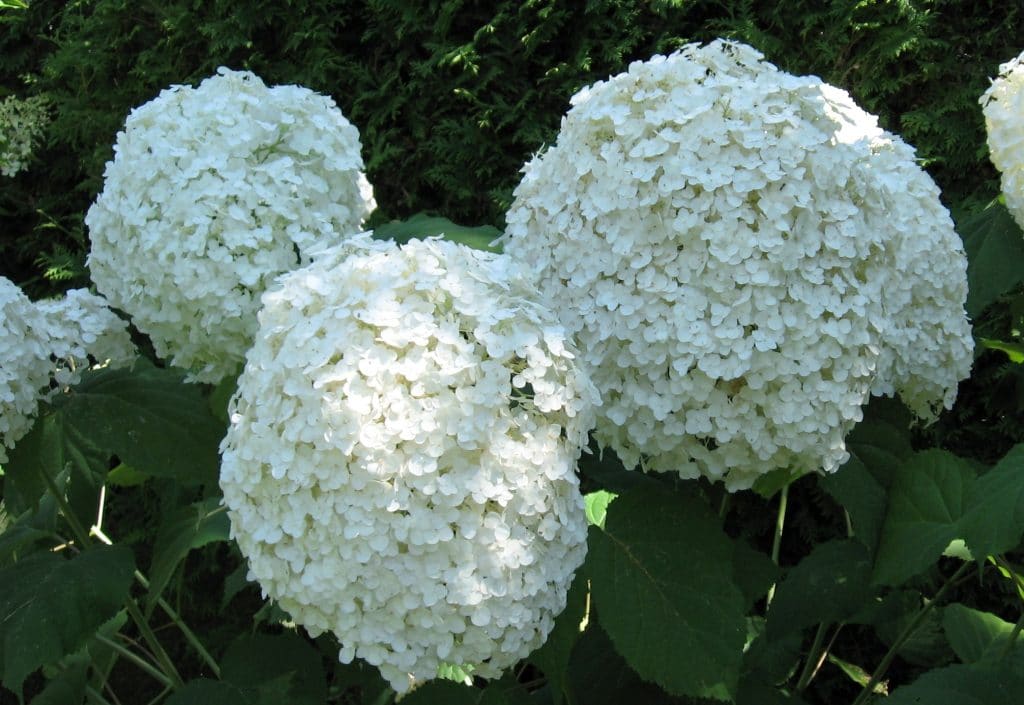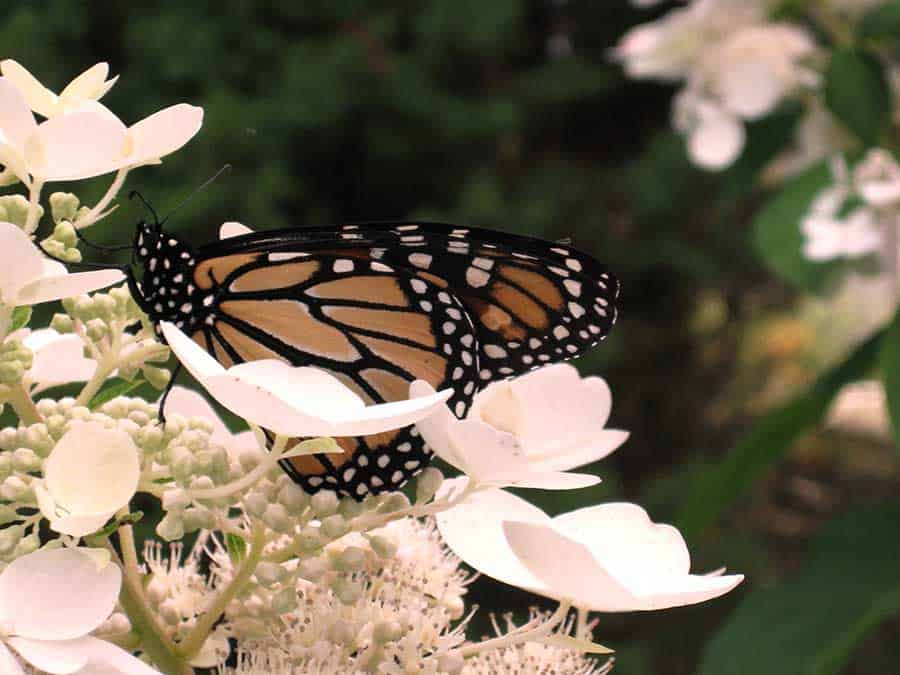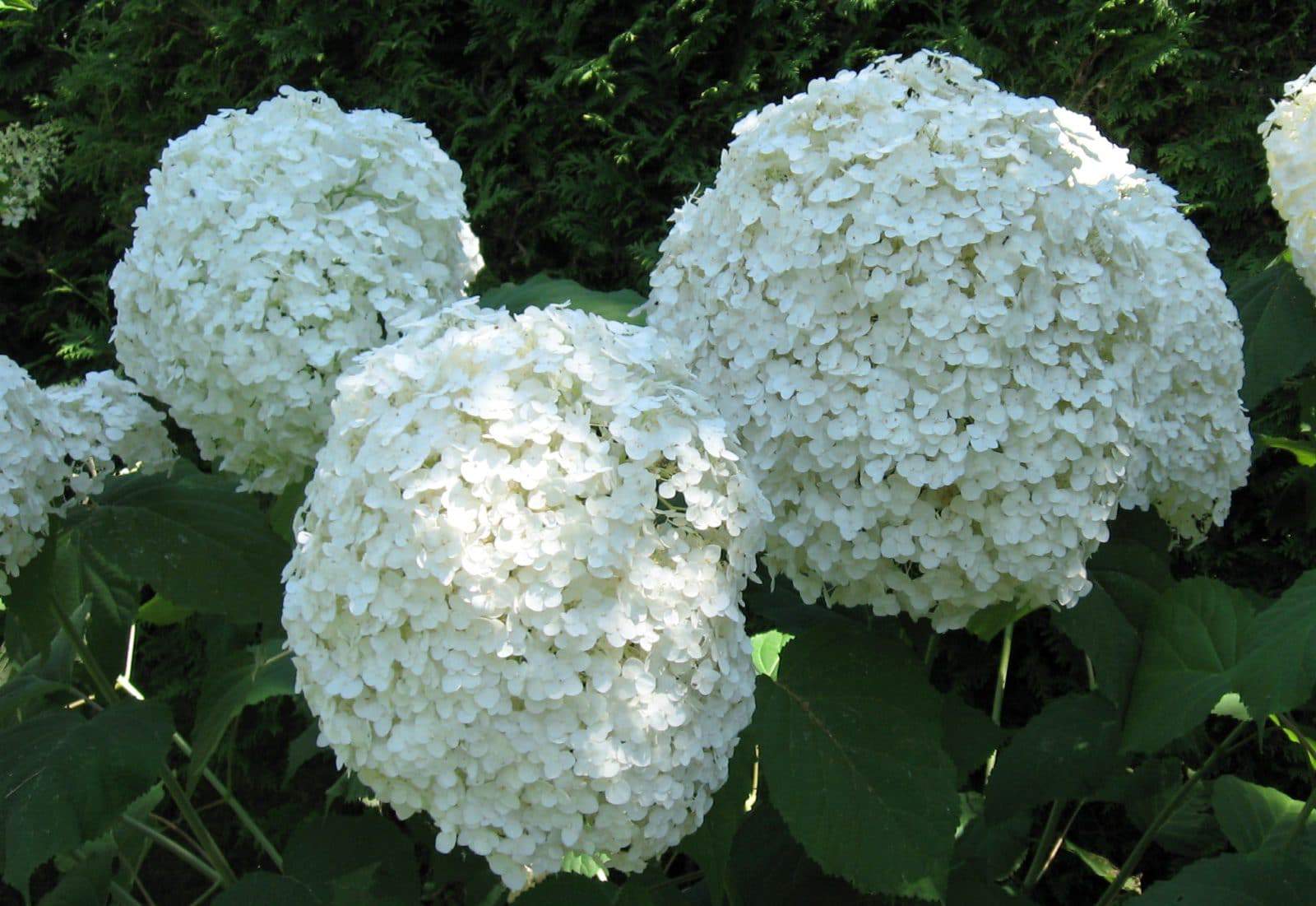
Hydrangeas are one of the most loved and widely planted flowering shrubs in Canada. And although the Hydrangea genus is a large one, in my current garden, there are representatives of just two species: the smooth hydrangea (H. arborescens) and the panicle hydrangea (H. paniculata), both hardy to Zone 3.
In the past I’ve grown other types in other gardens, notably big-leaved (H. macrophylla cvs.) and oak-leaved (H. quercifolia cvs.) hydrangeas, but Lake Simcoe’s winter westerlies in Ontario have proven too much for these species in my breezy Zone 5a garden. Nevertheless, the recent explosion of new smooth and panicle hydrangea cultivars has been exciting to witness and has more than held my horticultural interest.
The world of hardy hydrangeas has changed radically since I began to garden. New introductions have excellent disease resistance, improved hardiness, larger flowers in a wider range of colours, stronger stems and a longer season of bloom. These superior new cultivars have rendered sentimental old favourites, such as floppy H. a. ‘Annabelle’ and small-flowered, brittle-stemmed PeeGee (H. p. ‘Grandiflora’), hydrangeas virtually obsolete.
Smooth hydrangea (Hydrangea arborescens)
Native to the eastern U.S., the first smooth hydrangea to enjoy widespread popularity was H. a. ‘Annabelle’ which was discovered as a natural hybrid in rural Illinois in 1901. Not introduced until 1960, ‘Annabelle’ replaced the older H. a. ‘Grandiflora’ that had been discovered growing wild in Ohio in the 1880s and was a popular farmstead plant. Sadly both cultivars had weak stems, and when in full bloom, summer downpours would invariably bend or snap their stems, sending their flowers crashing to the ground — a singularly unhappy sight.
But all that changed in 2009 with the introduction of Incrediball smooth hydrangea (H. a. ‘Abetwo’). Not only does Incrediball have bigger flower corymbs (at least one foot/30 cm wide), it also has strong, pliable stems. During heavy rainstorms, the central flowers remain erect while the outer ones dip — rather than flop — so that the flowers are evenly distributed from the top to the bottom of the shrub.
Growing up to four feet (1.2 m) tall and wide, Incrediball was selected by Tim Wood (of Bloomerang lilac fame) at Spring Meadow Nursery in Michigan from an open-pollinated seedling of ‘Annabelle’. Incrediball bears fragrant flowers that open pale green and then turn white in midsummer and green again in autumn. All smooth hydrangeas bloom on new wood, and the biggest flowers are produced when shrubs are cut back to ground level in late winter before spring growth resumes.
One year later in 2010, breeder Tom Ranney and North Carolina State University introduced the groundbreaking pink-flowered Invincibelle Spirit (H. a. ‘NCHA1′), and Dr. Ranney’s cutting edge hybridizing program has since grown into the Invincibelle Series, including an improved form of Invincibelle Spirit called Invincibelle Spirit II (‘NCHA2’) with larger flowerheads and stiffer stems. Other worthy cultivars in the series include Invincibelle Ruby (‘NCHA3’), diminutive Invincibelle Wee White (‘NCHA5’), Invincibelle Mini Mauvette (‘NCHA7’) and Invincibelle Limetta (‘NCHA8’).

Panicle hydrangea (H. paniculata)
The grandparent of all our modern panicle hydrangeas is H. p. ‘Grandiflora’, or as it’s more commonly branded, the PeeGee hydrangea. Known as ‘Minazuki’ in its native Japan, it was introduced to the West by plant hunter Philipp Franz von Siebold (1796-1866) in the early 1860s. The PeeGee hydrangea arrived in Canada in 1881 and gained almost instant popularity due to its hardiness, mid- to late summer flowering and general ease of culture.
Like the smooth hydrangea, the early PeeGee types suffered from weak stems that were unable to support their large flower panicles; summer rains and wind were their worst enemies. Then in the 1950s, the formidable Belgian husband and wife plant breeding team of Robert and Jelena de Belder set their sights on breeding new cultivars with diverse growth habits, flower colours and — most importantly — sturdy stems.
I grow two of the de Belder’s introductions: the well-known Pink Diamond (‘Interhydia’), and ‘Phantom’, which boasts the largest flowerheads of any H. paniculata cultivar. The flower panicles of ‘Phantom’ have an almost indeterminate growth habit so that the tips continue to produce new buds until they’re finally nipped back by hard autumn frosts. The result is a two-toned inflorescence with the older flowers at the base of the panicle turning a rich pink that contrasts nicely with the new, creamy white flowers at the top. Individual panicles regularly measure more than one foot (30 cm) in length.
Recently, I’ve begun to experiment with some newer H. paniculata cultivars, and one of the very best is the dwarf, midsummer-blooming Bobo (‘Ilvobo’). A seedling of Pink Diamond, it was selected by Belgian breeder Johan Van Huylenbroeck (who also gave us H. p. Pinky Winky) and introduced in 2012. Growing just two feet (60 cm) tall and wide, it’s ideal for small gardens and herbaceous borders. I’m also growing Little Quick Fire (‘SMHPLQF’) which grows four feet (1.2 m) tall and wide as well as Fire Light (‘SMHPFL’) with its deep pomegranate fall flower colour. All are beautiful.
Like smooth hydrangeas, panicle hydrangeas bloom on new wood and should be pruned in late winter or early spring as required (heavy pruning produces larger flowers). Both types should be planted in good garden loam and sited in a full sun to part shade location. Add water and stand back!
Share your comments
Do you grow hydrangeas in your Canada 150 garden?



i just bought another bobo hydranga i have it in a pot its doing really good the other one i planted in the yard its now getting some green leaves on it
I have 2 hydrangea that do not bloom but 5-6 different varieties that do. Could someone tell me why no blooms. They are now in there 4th year.. Thank- you
Well, we”ve heard of taking up space in the garden….this summer she, Annabelle(arbor.) , showed truer form than ever before…she takes up one quarter of my upper garden and thru the higilty-pigilty fence…my neighbours stop in their tracks and cars halt just to get up close and try and guess just exactly what plant she is….I have found the only way I can either take her back in the ground is with a lino-knife, on hands and knees…otherwise she would wander over to my neighbours and beyond., I kid you not. E.
i have a bo bo hydranga i left in a pot in winter out doors did not do good i will put it in the ground this fall love hydrangas
While I can agree that Annabelle does fall over in heavy rain I have had the most beautiful display this year…They have loved this mild wet spring/summer..
There is no easier plant..you can ignore it..trim it..hard cut it back…no matter it blooms prolifically…some flower heads the size of dinner plates..
I will look for the other named varieties but will continue to be amazed by Annabelle..
I’ve recently added Incredibal, Bobo and Little Quick Fire to my garden and no plants I have acquired recently have excited me in the same way that they have. I am growing Bobo in a container and it overwintered very well in a unheated, insulated shed on my property, but I think I will find a place for it in the garden once the heat of the summer has disapated. Hydrangeas are just gorgeous plants and the fact that these varieties are very hardy and bloom on new wood make them even more perfect in my opinion!
I was wondering about Bobo. Glad both of you mentioned it. I have to move a rose that is now getting too much shade and was think about Bobo. Maybe, I’ll look for it this fall.